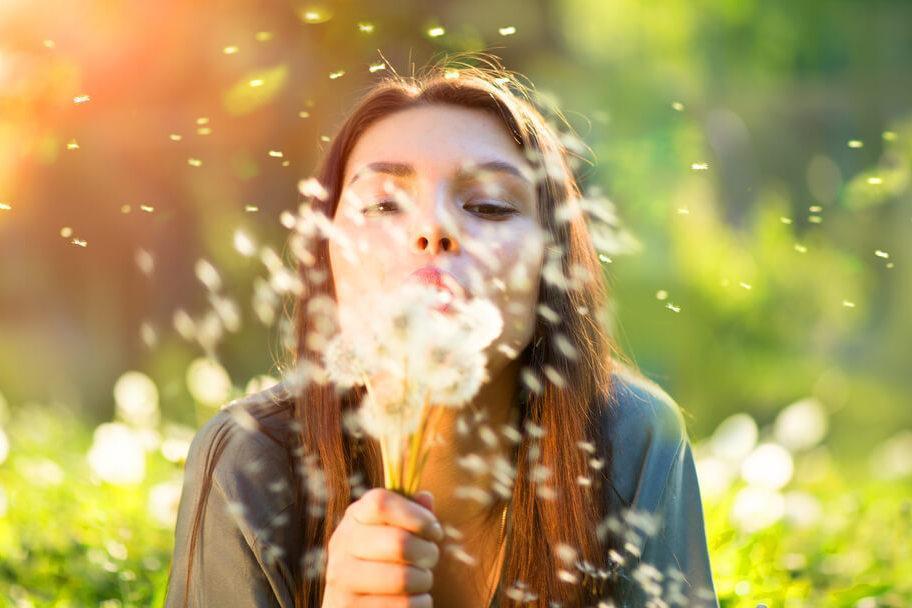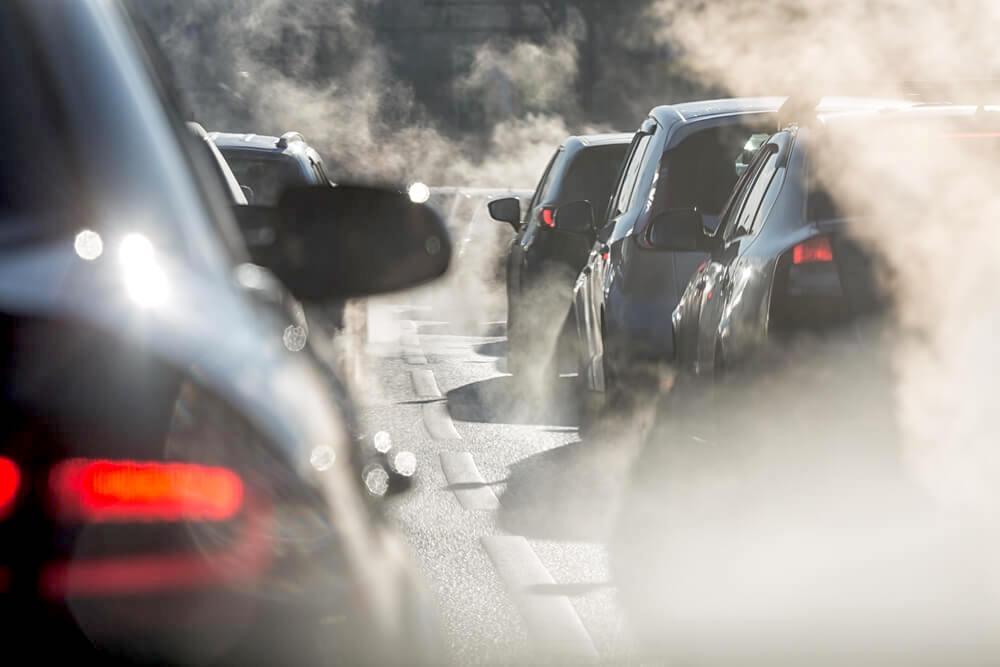Spring is over and it’s now time to get even lighter on clothing, as summer is already here. Apart from the warmth, there is so much to look forward to- picnics at the park, backyard barbecues and hundreds of other summertime activities.
Unfortunately, summer time also comes with its fair share of downsides; there are health concerns to contend with. Of notable significance are allergies caused by toxins that come with warm weather. These may come from increased pollen and mold in the air or insect bites and materials that become toxic due to high temperatures.
So fi you’re sniffing and coughing and itching for no apparent reason, you might want to see if you’re suffering from any of these summer allergies.
Pollen Allergy – Hay Fever
One of the main allergies that come with summer is allergic rhinitis. Also known as hay fever, the condition manifests as an inflammation in the nose caused by an overreaction of the immune system to airborne allergens. ‘Hay fever’ is so named due to its prevalence during the haying season.
The culprit behind the condition is pollen from weeds and grasses that thrive in the summer heat. With plants growing basically everywhere, hay fever affects people all around the world. Statistics put its prevalence at 30% worldwide and about 7.8% amongst the adult population in the US.
Grasses and Weeds that Cause Hay Fever
Pollen allergy in summer is caused by seasonal plants that produce flowers as the environment heats up. There also flowering trees that release pollen during summer breezes, contributing to hay fever as well. So what should you be on the lookout for?
Generally, grasses release the allergens throughout the season while trees and some shrubs release theirs in late summer. Among the grasses to be wary of include timothy grass. It’s native to Europe but it has been introduced to many regions in the world- where it continues to cause allergy flare-ups.
Another plant in this category is the Kentucky bluegrass. It flowers starting late spring through summer. It’s considered to be one of the most serious allergy-causing grasses, due to its high pollen-production.
Others grasses and shrubs to avoid: Ragweed, English Plantain, Sheep Sorrel, Mugwort, Orchard grass Sweet Vernal grass, Red Top grass, and Sagebrush.
Trees to keep off: Ash, Birch, Elder, Hazel, Oak, Plane, Willow, Yew, and Horse chestnut. These are wind-pollinated hence they produce clouds of pollen- mostly in early summer.
Expert Advice: While it might be hard to differentiate the many types of plants and grasses that aggravate allergies, here is what to remember: Flowers or open seed pods equals pollen-release.
Signs and Symptoms of Pollen Allergy
If pollen sets off your allergies, there are some tell tales that you can watch out for. The main ones include;
- Sneezing
- Stuffy and runny nose
- Itchy eyes and nose
- Watery eyes
- Itchy skin- on contact
Long term exposure to pollen can lead to severe symptoms such as excessive fatigue and recurrent headaches.
Note: Although the condition has ‘fever’ in it, fever isn’t one of its symptoms.
Tips to Keep Pollen Off Your Body
- Wash all fruit and vegetables thoroughly: Summer winds carry allergens from far away places and spread it on any available surface. This includes farm produce especially groceries. You can end up ingesting pollen from unwashed groceries.
- That being said, some fruits and vegetables can be handy in combating allergic reactions. Oranges, watermelons, grapefruit, and red peppers come to mind. These are natural vitamin C sources known to lessen effects of allergens. You should also go for natural sources of antihistamine such as red onions and apples.
- Close your windows: The warm summer breeze could be welcome before the cold fall winds beckon. However, there is a downside to this in that winds will blow allergens into your home. To be on the safe side, keep your windows tightly shut.
- Keep your lawn short: Mowing your lawn is a good way of keeping your front and backyard looking great. During summer the practices come with the added advantage of preventing grass from releasing pollen.
- You can also get rid of the lawn, especially if your allergic reactions are on the extreme end. Instead, you can opt for gravel or decking. If that is not an option, then lie on a hammock to keep your skin and nose off the grass.
- Use weed-suppressing/ ground cover plants: Since weeding is out of the options for allergy sufferers, your garden could do with plants that suppress weeds and do not release pollen themselves. Such include geraniums, alchemilla, and epimedium.
- Opt for a winter garden: A perfect alternative to perennial plants is evergreens. These are plants whose flowering is brief and leaves maintain their luster year long. Evergreens such as hosta, bergenia, and tiarella will do as garden plants.
- Wear long and cool clothes: Pollen is airborne and keeping it off your skin can be quite difficult. You can, however, minimize the exposure by wearing appropriate clothes; long and cool clothes will do.
- Wash and dry clean your clothes: Pollen that attaches to clothing will easily find its way to your skin. Reduce the risk by washing often and if possible have your clothes dry cleaned.
- Consider wearing a mask: If your allergies flare up quite often, summer would be a good time for you to wear a protective mask. This should limit the chances of breathing in pollen. This can prove helpful for people working over long hours in the open, such as gardeners and farm workers.
Insect Stings and Bites
Warmth brings insects with it. Bees, wasps, hornets and yellow jackets are some of the critters that you will encounter in the summer heat. Summer is the time of the year when colonies that started in spring expand since there is enough nectar to feed on.
These insects are great for the environment as they help in pollinating plants. For example; bees land on flowers for nectar and in doing so, dry and loose pollen sticks to their bodies and is transported from one plant to the other. This essential biological process, however, spells doom to your allergies.
Apart from more and more pollen finding its way into your garden, the park and trees around you, these insects will sting if provoked. Insect stings are not only quite painful but end with venom being injected into your body.
Insects like mosquitoes, bed bugs, fleas and ticks also multiply rapidly during summer. Just like stings inject venom, bites also deposits venom and in some cases anticoagulants into your body.
Signs and Symptoms of Insect Stings and Bites
Most allergic reactions from insects are localized. As such they lead to small lumps or swelling on the sting area. The reaction occurs due to release of histamine from the surrounding tissue to tackle the inflammation and toxins. The swelling usually dies down within a few hours.
Here are some of the symptoms to expect;
- Localized reddish swelling
- A painful and burning itch
- Numbness on the bite area
This is not to say that allergens from insects shouldn’t worry you. Although cases of severe allergies from insect are rare, when they do occur, they can be quite serious. Symptoms include;
- Itching and development of hives
- Stomach distress and nausea
- Lethargy
- Fever and loss of consciousness
- Difficulty breathing and rapid heartbeat
These are indicators of a potentially fatal condition- anaphylaxis. Simple bee stings have led to countless deaths, so yes, you have a reason to worry.
Tips on Avoiding Insect Bites and Sting
- Since these insects are usually found on flowers and gardens, do not venture into the open for long- and if you must, don’t walk barefooted.
- Do not indulge in sweet-smelling perfumes- they attract bees and wasps just like flowers do. Same goes for open soda cans and open food containers during a picnic.
- Slap on some insect-repellent especially when working in the open for long hours.
Smoke and Smog
Summer is a time for backyard barbecues, campsite fires, and bonfires parties. These fun activities can, however, result in triggering your allergies. The smoke that build-ups from the fires pollute the air around you. Once inhaled, the pollutants will affect your breathing; exposure will also irritate your eyes.
Smog also increases with rising temperatures. When sunlight and exhaust gases from vehicles mix, a smoky fog or ‘smog’ is formed. It comes with particulates such as ozone, nitrogen oxides, and sulfur oxides. This yellowish or blackish pollutant is a serious allergy trigger.
Health Effects of Smoke and Fog
These pollutants are mostly associated with breathing problems. In severity though, they can cause harmful and lasting effects, especially to children and senior citizens. Amongst the dangers of inhaling these pollutants include;
- Decreased lung capacity
- Shortness of breath
- Painful breathing
- Wheezing and coughing
- Worsening heart and lung conditions
- Fatalities in record high levels
You can avoid all this by staying away from open fires and smoke. Additionally, stay away from major cities or industrial areas whenever smog is reported.
Lake Water Allergies – Swimmer’s Itch
A swim out in the lake is one of the allures of summer. This can, however, turn unpleasant if you are prone to allergies. Ideally, the thought is that lakes are safer than swimming pools. Reason being, pools contain chemicals meant for water purification.
What you may not know is that lakes also contain pollutants. These are chemicals and waste released by plant and animal that come to life during summer, in and around lakes. The water also contains parasites from snails that can burrow into your skin causing rashes.
Among the symptoms brought about by lake, water allergens include a tingling or burning sensation on the skin. The irritation is usually followed by itches, lesions and reddish pimples. In severe cases, difficulty in breathing can also accompany the other symptoms.
Volatile Organic Compounds
Most people love the sweet smell of a new car. You probably look forward to summer when the smell becomes intense. Sweet as the smell is, it a mixture of toxic chemicals used in car construction.
These compounds are found in the adhesives, rubbers, woods, fabrics, paints, sealants, plastics, and various lubricants and oils. When these combine with the summer heat, their toxicity is multiplied and toxins are released.
There are about 200 compounds that go into manufacturing vehicles, with many of them being sufficiently toxic to trigger allergies. The most dangerous ‘new car smells’ consists of chemicals known as volatile organic compounds (VOC).
These are fumes or gases released by solids or liquids. The process is known as off-gassing and results in saturation of toxic carbon-based chemicals in the air. Up to a few months following a car’s production, the potentially dangerous gases remain trapped in the vehicle’s body- and only require a little heat to escape.
Such hazardous chemicals include; formaldehyde, phthalic, ethylbenzene, toluene, and ethers used as flame retardants. Going by reports on VOC profile in many car models, these toxins can cause birth defects and learning disabilities, and in severe cases, cancer.
VOCs not just confined inside vehicles: These materials are also found in other indoor environments such as workplaces, schools, and even homes. The standards of emissions for such environments are however well documented and regulated as opposed to car industries’.
Symptoms of VOC Induced Allergic Reactions
Once inhaled, these toxins can lead to headache, dizziness, and nausea especially when you are confined in your car without much ventilation. Allergies can also be triggered resulting in;
- Flu-like conditions
- Skin, eyes, throat and ears irritation
- Increase in the severity of asthma
Preventive Measures Against VOCs
Not buying a new car is the surest way of avoiding contact with ‘new-car’ smells. But since that is probably not an option for you, here are measures of limiting exposure to the toxins;
- Keep your vehicle well ventilated- more so during the first year or few months of ownership
- Ensure that the interior is clean and dust free at all times- dust offers surfaces for VOCs to attach on.
- Use a sunshade to cover the windscreen when parking in direct sunlight.
- Try as much and park in the shade. This will reduce the gassing-off effect. If possible, leave your windows slightly cracked improve expulsion of VOCs.
Since gassing off is a slow process, you can speed it up for a more safer environment. Here is how: With the engine running, park in direct sunlight and turn the heater full-blast; leave the windows slightly open and let the VOCs escape- an hour of this should considerably reduce the allergens.
Allergies have no cure and anybody can get a reaction from hundreds of triggers. Some conditions increase susceptibility by increasing dispersal and production of allergens; summer season is such a condition.
There are measures that you can take to protect yourself. If protecting yourself doesn’t work, there is medication that can lessen the effects. Such is in the form of antihistamines, corticosteroids, and decongestants.
That said; make summer more enjoyable by familiarizing yourself with the above summer allergies and learning from the tips on how to stay clear of the triggers.








Leave A Comment